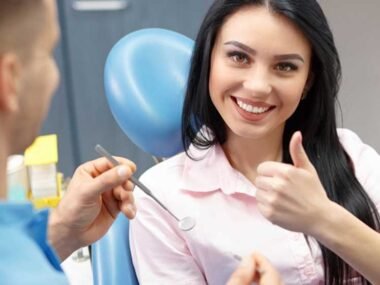1. The Osteopath:
Being sidelined with a sports injury can be comparable to being disoriented in a labyrinth without a navigational guide. At such moments, the assistance of an osteopath or physiotherapist becomes crucial. These healthcare experts are particularly adept at deciphering the enigmas of the human body in regards to accidents that occur in sports.
Imagine that as you limp into their office, experiencing discomfort with each step, they extend a cordial smile and a supportive nod in your direction. Comparable to Sherlock Holmes of the musculoskeletal system, they meticulously analyse your injury, inquire about the pertinent details, and decipher the enigma of your discomfort.
You need look no further than an osteopath Ashford Kent has to offer, for assistance with your sports injury. His or her expertise will do wonders to solve the enigma surrounding your pain and get you back on the road to recovery.
With their years of experience and expert expertise, they will customize a treatment plan to meet your particular requirements. They are by your side throughout, whether you require guidance on injury prevention, targeted exercises, or hands-on therapy for your ankle, knee, or hip.
2. Ice an Injured Area:
A sports injury is a curveball that life tosses at you; in such a circumstance, ice becomes your most reliable companion. Comparable to a refreshing airflow during the height of summer, it calms those sweltering muscles and joints immediately.
However, science does explain the coldness! Specifically, the application of ice to the injured region aids in vasoconstriction, thereby diminishing both blood circulation and inflammation. It is as though you have temporarily halted pain and edema, allowing your body to resume the healing process.
You may be wondering, “However, why don’t I transform into a human popsicle?” Have no fear, my companion. For optimum relief, perform this frigid ritual every couple of hours. Do you not feel happy about that?
3. Engage in Safe Movement:
As the adage goes, “No pain, no gain.” In the context of sports injuries, however, that adage could not be more inaccurate. Despite the seemingly valiant assurance of enduring the pain, doing so will only result in additional harm and a prolonged period of recuperation.
Adopt secure movement techniques instead by paying attention to your body and abiding by its boundaries. When your injury is aggravated by a particular activity or motion, your body is indicating, “Hey, perhaps we shouldn’t do that, all right?”
Consequently, elect for low-impact exercises that will not subject your wounded combatant to unnecessary strain and deceleration. Consider engaging in cycling, swimming, or mild stretches—any activity that stimulates the body without causing additional damage. It is certain that your future self will be grateful to you.
4. Implement Cold Therapy:
Shall we now discuss the therapeutic properties of ice therapy? It resembles a pain reliever created by Mother Nature, but without the adverse effects and the need for a prescription pad.
The mechanism of action is as follows: cold applied to an injured area constricts blood vessels, thereby decreasing inflammation and blood flow. It is as if you were to recalibrate the pain response of your body, providing much-needed respite from those annoying aches and pains.
However, there is more! Additionally, cold therapy numbs the affected area, enabling you to continue with your daily activities without experiencing any initial distress. Therefore, remove that ice pack or package of frozen peas from the freezer and apply the cold compress that your sports injury merits. Later, your body will be grateful.
5. Compression Method:
Compression is an indispensable technique for the purpose of sustaining injured extremities and preventing swelling. It is comparable to extending a tender embrace to one’s body, furnishing stability and support precisely where one requires it.
Invest in a compression wrap or sleeve of superior quality and drape it securely around the afflicted area. We’re aiming for the Goldilocks level of snugness: precisely right, not too tight. This mild compression facilitates enhanced blood circulation and inhibits the accumulation of fluid, thereby diminishing inflammation and accelerating the recuperative process.
Therefore, feel free to adorn it with a gift-like wrapping on Christmas morning. The additional assistance will be beneficial to your injury, and you will quickly regain your mobility on your bike, hoverboard, or feet.
6. Maintain an Exercise Routine:
Include swimming, tai chi, or yoga among your low-impact, mild exercises that will not worsen your injury. Therefore, avoid becoming a settee potato; get active and demonstrate to that ailment who you mean!
7. Stay Hydrated:
Water consumption aids in tissue repair, flushes pollutants from the body, and maintains lubricated and flexible joints. Therefore, seize that water bottle and consume it as if tomorrow never exists. The hydration boost will be appreciated by your body, and it will bring you one step closer to recovery. Viva to that!










